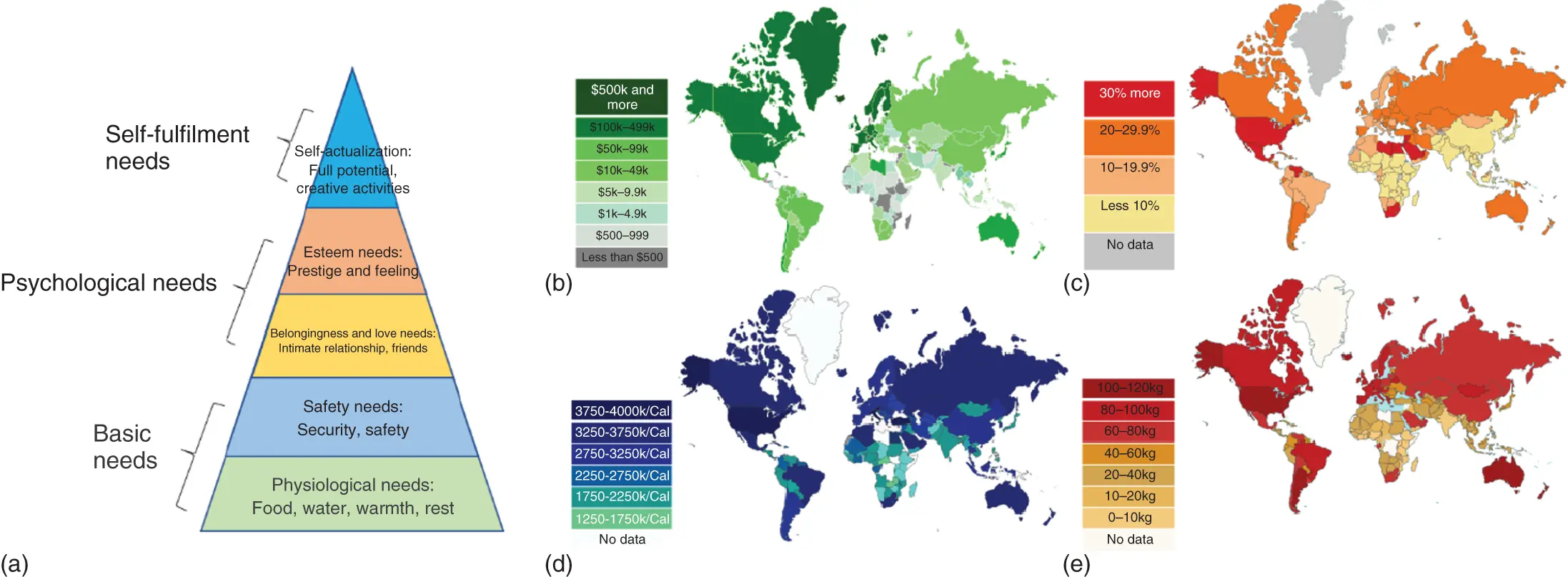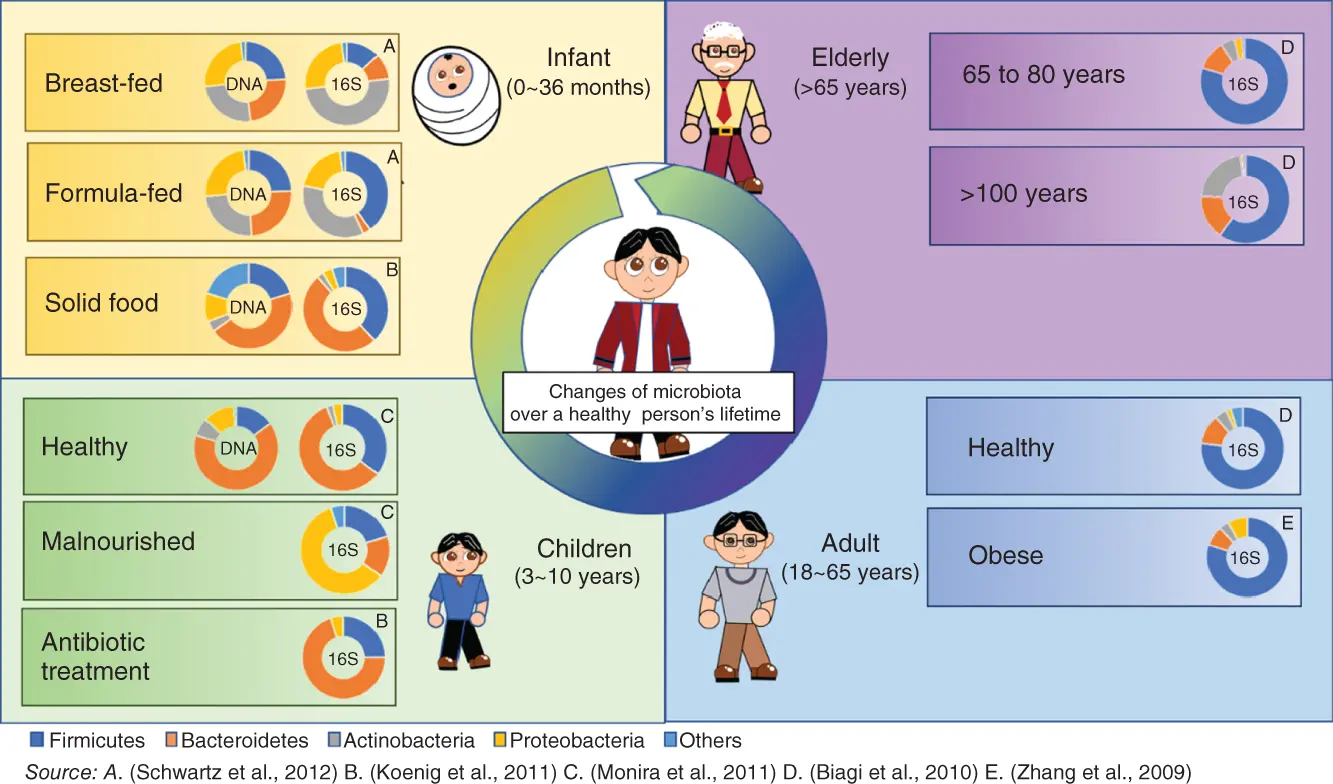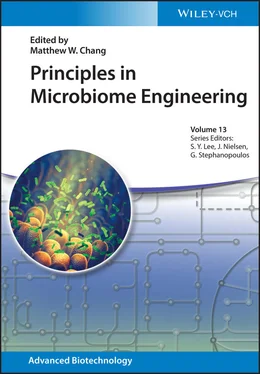Principles in Microbiome Engineering
Здесь есть возможность читать онлайн «Principles in Microbiome Engineering» — ознакомительный отрывок электронной книги совершенно бесплатно, а после прочтения отрывка купить полную версию. В некоторых случаях можно слушать аудио, скачать через торрент в формате fb2 и присутствует краткое содержание. Жанр: unrecognised, на английском языке. Описание произведения, (предисловие) а так же отзывы посетителей доступны на портале библиотеки ЛибКат.
- Название:Principles in Microbiome Engineering
- Автор:
- Жанр:
- Год:неизвестен
- ISBN:нет данных
- Рейтинг книги:5 / 5. Голосов: 1
-
Избранное:Добавить в избранное
- Отзывы:
-
Ваша оценка:
- 100
- 1
- 2
- 3
- 4
- 5
Principles in Microbiome Engineering: краткое содержание, описание и аннотация
Предлагаем к чтению аннотацию, описание, краткое содержание или предисловие (зависит от того, что написал сам автор книги «Principles in Microbiome Engineering»). Если вы не нашли необходимую информацию о книге — напишите в комментариях, мы постараемся отыскать её.
Provides an overview of the techniques and applications insight into the complex composition and interactions of microbiomes Principles in Microbiome Engineering
Principles in Microbiome Engineering
Principles in Microbiome Engineering — читать онлайн ознакомительный отрывок
Ниже представлен текст книги, разбитый по страницам. Система сохранения места последней прочитанной страницы, позволяет с удобством читать онлайн бесплатно книгу «Principles in Microbiome Engineering», без необходимости каждый раз заново искать на чём Вы остановились. Поставьте закладку, и сможете в любой момент перейти на страницу, на которой закончили чтение.
Интервал:
Закладка:
Source: Based on Walker et al. [92].
1.2.2 The Socioeconomic Impact on Diet‐Related Microbiome Changes
Access to proper living conditions, sufficient nutrition, and clean water severely affect the host microbiota [100]. Maslow's hierarchy of needs can be generally divided into three main needs categories: basic, psychological needs, and self‐fulfillment ( Figure 1.2a) [102]. Poorer nations with lower gross domestic product (GDP) per capita have limited access to different types of foods, comprising mostly simple carbohydrates. They are also granted limited access to clean water, resulting in poor sanitary conditions. This can be seen in a number of nations in the African continent and some Southern American countries ( Figure 1.2b–e). People within these wealth groups require basic needs and are usually underfed, where some might be under‐nourished. Citizens from countries within the middle‐income range have access to foods that can meet the dietary requirements. These people have psychological needs, where despite having the same dietary access as countries with high GDP, these people can satisfy their needs adequately due to their limited spending power [103]. Citizens of the developed countries with high GDP are generally regarded as having self‐fulfillment needs. Due to a surplus of foods and greater spending power, citizens in these countries adopt dietary habits based on their personal preferences. This results in higher consumption of meat, dairy products, sugary products, and processed foods resulting in increased incidences of diabetes and obesity [104]. Countries falling under these categories are nations from Northern America, Western Europe, and East Asian ( Figure 1.2b–e).

Figure 1.2 The socioeconomic impact on dietary habits.(a) The schematic of Maslow's hierarchy of needs and the different categories of needs. (b) The global distribution of average income generated per annum wealth [101]. (c) The global percentage of obese patients in different nations. (d) The global average consumption of sugar per individual. (e) The global average consumption of meat per individual.
Source: Based on LaMagna [101].
On top of access to different diets, individuals of wealthier groups also have access to certain types of dietary luxuries due to their purchasing power. Such dietary luxuries include access to alcohol, tobacco, and fatty foods (e.g. foie gras, caviar). The consumption of alcohol and tobacco has been known to perturb the gut microbiota populations [105]. The exposure of compounds found in drinking and chewing tobacco can influence the mucosal layer in the GI tract that serves as the initial protective barrier against pathogenic microbial colonization [106]. Chewing or smoking tobacco was found to increase the abundance of anaerobic bacterial species in the oral cavity and upper GI tract, where there was observable perturbation in the oral microbiota from the genera of Actinobacillus, Porphyromonas, Lautropia , and Bifidobacterium [107, 108]. Similarly, the chronic exposure of alcohol to the oral and GI microbiome reduces the abundance of Akkermansia muciniphila ( Verrucomicrobia phyla) that exhibits anti‐inflammatory properties [109]. Thus, based on the wealth of the individual, the dietary habits influence the gut microbiome and the host health as a whole.
1.2.3 Age Groups and Dietary‐Related Microbiome Changes
The composition of the average human's microbiome changes over the span of their lifetime, where these changes are attributed to the individual's basal metabolic rate (BMR), host biochemistry, lifestyle, and dietary habits. The BMR of an average individual peaks around the late teenage years and declines as the individual ages. Coupled to the eating habits, the gut microbiota changes depending on these factors, where the composition of the gut microbiota shows vast differences at different growth stages ( Figure 1.3).

Figure 1.3 The composition of the gut microbiome in people at different age stages.
Source: Based on Koenig [110] and Biagi et al. [111]
.
The initial development of the human gut microbiota is shaped during birth through microbial colonization introduced by the environment. During gestation, fetuses are generally considered germ‐free in utero , where the gut microbes of the individual microbiota are introduced post‐delivery. The microbiome is shaped by initial microbes introduced during childbirth, where infants delivered through natural birth and Caesarean‐section (C‐section) have different microbiota composition [18, 112, 113]. The GI tract of infants delivered by natural birth is primarily colonized by maternal vaginal and fecal bacteria with the enriched abundance of Lactobacillus and Bifidobacterium spp. [114], whereas the GI tract of C‐section infants is colonized by other environmental bacteria [112]. The microbiome is further shaped by the infants' diet, where the breast‐fed infants have more heterogeneous microbiota with higher taxonomic diversity than formula‐fed babies [115]. These variations in the delivery method and diet contribute to the maturation of the infant's immune system through the gut microbiome development [116]. Breast‐fed infants have further exposed microbes present in the milk and breast surface, accounting for over 700 species of bacteria [117] made up primarily of Streptococci and Staphylococci [118]. Breast milk is also rich in complex oligosaccharides that stimulates the growth of beneficial microbial groups such as Staphylococci [118] and Bifidobacteria [119]. In comparison, the microbiota of formula‐fed babies adapts a microbiota similar to that of an adult, with an increased abundance of E. coli , Clostridium difficile , Bacteroides fragilis, and Lactobacilli [120, 121]. The microbiota during the age of 0–3 years old is highly dynamic, which stabilizes after the age of 3 years [122].
Children (3–10 years old) undergo massive changes in the microbiota composition, particularly due to the introduction of solid dietary foods. Food solids comprise various nutrients and fibers that facilitate the colonization of various microbial groups including butyrate producers such as Bacteroides and certain Clostridium species [110, 123]. The diet introduced during the pre‐adolescence phase influences how the microbiome takes shape, where children provided with a balanced diet (meat/fish, fruit, vegetables, eggs/beans, and bread/pasta) showed different microbiota shift compared to those given an unhealthy diet (processed, sugar‐rich, and fatty foods) [124]. A study conducted in Japan discovered that Ruminococcus and Bacteroides were found to be enriched in children provided with unprocessed foods (e.g. meat/fish, fruit), whereas Blautia and Clostridium were abundant in the GI tract of children provided with processed food. Additionally, micronutrients provided through nutritional beverages were found to influence the microbiota population. Children provided with the Growing Up Milk‐Lite (GUMLi) was found to have increased bifidobacterial abundance compared to natural bovine milk and other milk formulations [124], indicating that micronutrients can be used to alter the microbiota.
The microbiota diversity in adults is similar to the children gut microbiome, but varies in the abundance of the various groups where adults showed a lesser abundance of Actinobacteria , Bacilli , Bifidobacterium, Faecalibacterium spp., Clostridium cluster IV ( Ruminococcaceae ), and Bacteroidetes [125, 126]. Clostridium cluster XIVa (i.e. Butyrivibrio crossotus and related bacteria), Firmicutes, and Bacteroides were more abundant in adults than children [127–129]. Other phyla showing a lower abundance in average adults include Proteobacteria , Verrucomicrobiota , Actinobacteria , and Euryarchaeota ; where the various microbiota members play a role in microbes maintaining the host immune homeostasis [130]. The adult microbiota is relatively stable but can be perturbed by changes in diet, physical activity, illness, and changes in hormonal cycles and medical therapies. Alternations of the microbiome may positively or negatively impact the host health, where the microbiome is linked to various medical issues [131]. This will be discussed in the following subchapter 1.3.
Читать дальшеИнтервал:
Закладка:
Похожие книги на «Principles in Microbiome Engineering»
Представляем Вашему вниманию похожие книги на «Principles in Microbiome Engineering» списком для выбора. Мы отобрали схожую по названию и смыслу литературу в надежде предоставить читателям больше вариантов отыскать новые, интересные, ещё непрочитанные произведения.
Обсуждение, отзывы о книге «Principles in Microbiome Engineering» и просто собственные мнения читателей. Оставьте ваши комментарии, напишите, что Вы думаете о произведении, его смысле или главных героях. Укажите что конкретно понравилось, а что нет, и почему Вы так считаете.












